Nuclear torpedo and multipurpose submarines. 945 Barracuda and 945 Condor Projects
The expansion of the combat capabilities of the US Navy — first of all, the underwater component, which developed most dynamically in the 1960-80-s, demanded a sharp increase in the anti-submarine potential of the Soviet navy. In 73, in the USSR, the Argus program developed the concept of anti-submarine defense. Within the framework of this concept, Kometa (the head - General Designer Savin) began to implement the program for the creation of the Neptune KSPO (a complex situation lighting system), which included:
- the center of the system was the center of collection, processing, distribution and display of information, reflection;
- stationary lighting system underwater environment, which worked on various physical fields of the submarine;
- hydroacoustic buoys that are exhibited in the oceans by airplanes and ships;
- Space systems for the detection of submarines on various signs unmasking;
- maneuvering forces that include aircraft, submarines and surface ships. At the same time, the multi-purpose submarines of the new generation, which had enhanced search capabilities, were considered as the most important means of detecting, tracking and destroying (after receiving the corresponding command) enemy submarines.
TTZ on the development of a large multi-purpose nuclear submarine issued in March 72-th year. At the same time, the navy set the task of limiting the displacement of boats within the limits that ensure the construction of submarines at domestic factories (in particular, at the Krasnoe Sormovo plant in Gorky). The main purpose of the new submarine project 945 ("Barracuda") was tracking the missile carrier-assault groups and submarines of a potential enemy, as well as the destruction of these targets in the event of the outbreak of hostilities. The chief designer of the project is N.I. Kvasha, and the main observer from the naval forces - I.P. Bogachenko
A fundamentally important element of the new nuclear submarine was the use of a titanium alloy having a yield strength 70-72 kgf / mm2 in its robust hull, which ensured an increase in 1,5 times the maximum depth of immersion compared to the second-generation submarines. The use of a titanium alloy having a high specific strength made it possible, by reducing the mass of the hull, to save on the submarine's displacement to 30%, which made it possible to build nuclear submarines in Gorky and transport them by inland waterways. In addition, the titanium hull made it possible to significantly reduce the magnetic field of the vessel (for this parameter, the submarines of the 945-th project retain their leadership among the submarines today).
However, the use of titanium entailed a significant increase in the cost of the nuclear submarine and for those. reasons limited the number of ships under construction, as well as the number of enterprises participating in the program (in Komsomolsk-on-Amur, the technology for building buildings made of titanium was not mastered).
The torpedo-missile complex of the new submarine, compared with the nuclear submarines of the previous generation, had to have twice as much ammunition, an increased range of fire, due to the use of an improved target designation system and new ammunition (for rocket-torpedoes - 3 times, for torpedoes - 1,5 times ), as well as increased combat readiness (it took half the time to prepare for firing the first volley).
In the Design Bureau of Minaviaprom “Novator” under the leadership of L.V. In December, Lyulyev 1969 began to work on new 533-millimeter anti-submarine missile systems of the second generation Waterfall and 650-millimeter Wind, intended mainly to equip advanced third-generation nuclear submarines. “Waterfall”, in contrast to the VRUga-53 PCRK, was to be equipped not only with a special warhead, but also with a UMGT-1 compact self-guided torpedo (developed at NPO Uran) with an 1500 m response range through an acoustic channel, range to 8000 m and the maximum speed of the submerged 41 node. The use of two types of configuration expanded the range of use weapons. In comparison with Blizzard-53, Waterfall increased the maximum launch depth of the rocket, which was up to 150 meters, increased the range of fire ranges (from depths from 20 to 50 meters - from 5 to 50 thousand meters, from 150 meters - from 5 to 35 thsd. M), the pre-launch preparation time was significantly reduced (which was 10 seconds).
The “wind”, which had twice the maximum range compared to the “Waterfall”, could be completed with a UMGT torpedo or a nuclear warhead. The “Waterfall” complex (RPK-6 index) was used by the Navy in 1981 (it was equipped with both submarines and surface ships), “Wind” (RPK-7 index) - in 84.
Another type of weapon that was introduced on the third-generation submarine was the self-guided remote-controlled torpedo TEST-71. This torpedo was intended to destroy submarines and was equipped with active-passive HAS homing, which, together with the telecontrol system, ensured two-plane targeting. The presence of a telecontrol system made it possible to monitor the operation of the homing equipment and torpedo maneuvering, as well as to control them when fired. The operator on board the nuclear submarine, depending on the tactical situation, could retarge the torpedo or prohibit its homing.
The electric power plant provided torpedo movement in two modes - search (node speed 24) and approach mode (node speed 40) with multiple mode switching. The maximum range of the course (depending on the prevailing speed) ranged from 15 to 20 thousand meters. The depth of target search / loss from 2 to 400 meters. In terms of the secrecy of TEST-71, it was in many ways superior to the American torpedo Mk.48, equipped with a piston engine, although the American torpedo, at a comparable range, had a slightly higher speed (around 50 nodes).
To illuminate the surface and underwater conditions and target designation, it was decided to apply the advanced SAC MGC-503 "Skat". Thanks to measures to reduce the noise level of a nuclear submarine and to reduce its own interference during the operation of the sonar complex, the target detection range increased more than twice as compared to the second generation submarines.
The use of a new electronic weapons system made it possible to reduce the marginal error in determining the location by five times, and also significantly increase the intervals between ascent when determining the coordinates. The communication range has doubled, the depth of radio reception has increased three times.
For working out the technology and issues of strength, the Krasnoye Sormovo plant built a full-scale compartment of titanium alloy and a half-natural compartment using another, more durable titanium alloy, which was intended for use on ultra-deep prospective submarines. The compartments were delivered to Severodvinsk, where they conducted fatigue and static tests in a special docking chamber.
The nuclear submarine of the 945 project was intended to fight the enemy’s missile submarines and surface ships from the strike groups and aircraft carrier formations. The combat potential increased due to the enhancement of torpedo and missile-torpedo weapons, progress in the development of target designation systems, detection, navigation, communications, the introduction of information and control systems and the improvement of tactical-technical elements - depth, speed, stealth, maneuverability, survivability and reliability.
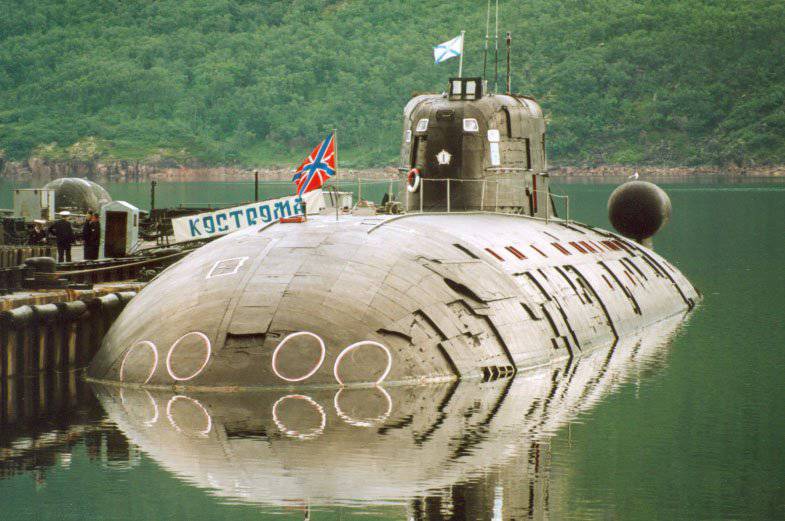
The submarine of the 945-th project was carried out according to the two-shell scheme. The light body has an ellipsoidal bow and spindle-shaped aft tip. Outboard openings are closed with scrub bolts, as well as kingsticons on the main ballast tanks.
The robust case, made of titanium alloy, has a relatively simple shape - a conical tip and a cylindrical middle part. The end bulkheads are spherical. Strong tanks are attached to the hull in such a way that the flexural stresses that occur when the submarine is compressed at a depth are eliminated.
The submarine hull is divided into 6 watertight compartments. The boat is equipped with an emergency system for flushing tanks of the main ballast using combustion products.
The crew of the boat consists of an 31 officer and 28 midshipmen, for whom good living conditions have been created. The nuclear submarine has a pop-up rescue chamber that can accommodate the entire crew of the submarine.
The main power plant rated power 43 ths. Liters. with. includes the OK-650A water / water reactor (180 MW capacity) and the steam-gear unit. OK-650A has a 4 steam generator, an 2 circulating pump of the first and fourth circuits and a 3 pump of the third circuit.
The boat has two AC turbogenerators, two nutrient and two condenser pumps. For serving consumers who use direct current, there are two reversible transducers and two groups of batteries.
The multi-blade propeller has improved sonar characteristics and reduced speed.
In case of failure of the main power plant, emergency power sources were provided for the subsequent commissioning, as well as backup means of movement. There are a pair of DG-300 diesel generators equipped with reversible converters (each 750 hp) with a ten-day supply of fuel. They were intended for the generation of alternating current for general ship consumers and a constant one for rowing electric motors.
To ensure movement in the underwater position with a speed of up to 5 units, the nuclear submarine was equipped with two rowing electric motors of direct current (power of each 370 kW), each working with its own propeller.
The submarine is equipped with GK-503 SCAT-KS (it has analogue information processing). The Molniya-M complex consists of a satellite communications system and a Paravan towed antenna.
The rocket-torpedo armament complex and the combat information and control system are provided with single and salvo firing without depth limits (up to the maximum depth of the dive). Four torpedo tubes of a millimeter 533 caliber and two millimeters 650 are mounted in the nose. The ammunition includes 40 weapons - torpedoes and rocket-torpedoes.
The head boat of the 945 project, K-239 Karp, laid the 8 of May 1982 of the year in Sormovo, the 29 of July of 1983 of the year was launched and the 21 of September of 1984 of the year became operational. The second ship of the same type, the K-276 "Crab", was laid in August 1983 of the year and in April 1984 of the year launched. The nuclear submarine became part of the Navy in the fall of 1987. In 96, the year K-276 (under the command of Captain First Rank V. Sokolov) was given the name Kostroma.
A further development of the submarine of the 945 project was the nuclear submarine of the 945A project ("Condor"). The main difference between the submarine and the ships of the previous series is the modified composition of armament, which included six torpedo tubes of a millimeter 533 caliber. In the ammunition included strategic cruise missiles "Granat", intended for destruction at a distance of up to 3 thousand of ground targets. The submarine also equipped with eight sets of self-defense MANPADS "Igla".
The number of waterproof compartments increased to seven. The submarine received an improved power plant with a capacity of 48 thousand hp. with the 190-megawatt reactor OK-650B. In the pull-out columns, two thrusters were installed (370 hp each). According to the level of unmasking signs (magnetic field and noise), the submarine of the 945А project was the most subtle submarine in the domestic fleet.
The first upgraded submarine, the K-534 "Catfish", was laid in June 1986 of the year in Sormovo, in July 1988 of the year launched, and 28 of December 1990 of the year entered service. "Catfish" in 1995 was renamed Nizhny Novgorod (captain of the first rank Voronkov). After that, Perch K-336 followed (in May 1990 was laid, in June 1992 was launched and in 1993 entered service). This submarine in the 1995 year was renamed the "Pskov".
The fifth nuclear submarine, built according to the 945B (“Mars”) project, which by its characteristics practically met the requirements for fourth-generation submarines, was cut in the slipway in the 1993 year.
On Kildin Island, in Russian territorial waters, 11 February 1992, K-276, commanded by second-rank captain I. Loktya, collided with the American nuclear submarine Baton Rouge (Los Angeles), which was trying to carry out secret tracking of the Russian Navy ships in the exercise area. As a result of the collision at the "Crab" was damaged damage to the cabin, which has ice reinforcement. The position of the American nuclear submarine turned out to be more difficult, she barely managed to reach the base, after which they decided not to repair the boat, but to withdraw it from the fleet.
Currently, all large nuclear submarines of the 945 and 945А projects continue to serve in the first fleet of submarines in the Northern Fleet (Ara-Guba), except for the Karp B-1998 "Karp" that was withdrawn from 239.
The main technical characteristics of nuclear submarines of projects 945 and 945А:
Surface displacement - 6300 / 6470 t;
Underwater displacement - 9100 / 10400 t;
Length - 107,0 / 110,5 m;
Width - 12,2 m;
Draft - 8,8 / 9,4 m;
Maximum submerged speed of 35 knots;
Maximum surface speed of 19 nodes;
Immersion depth - 480 / 520 m;
Extreme depth of immersion - 550 / 600 m;
Crew - 60 / 65 people.
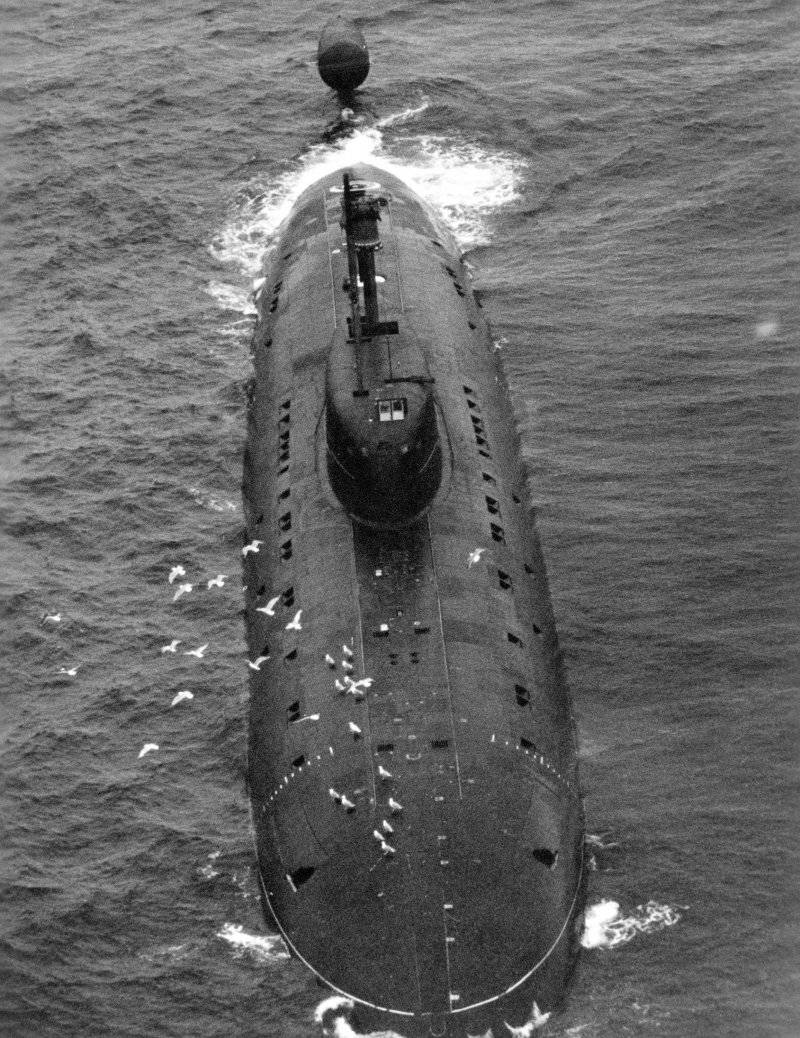
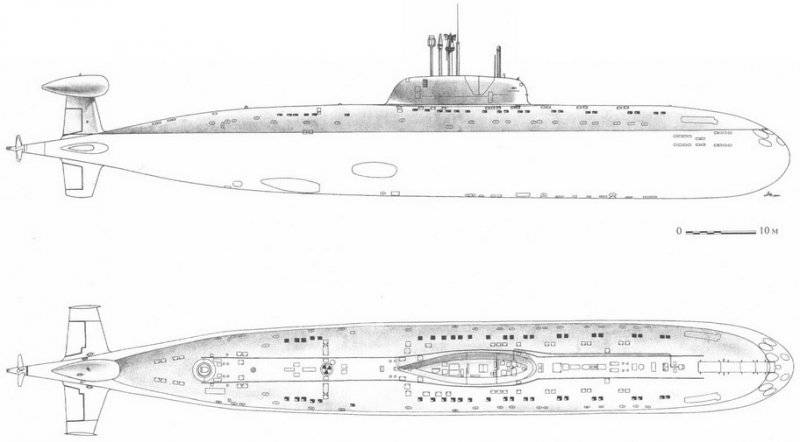
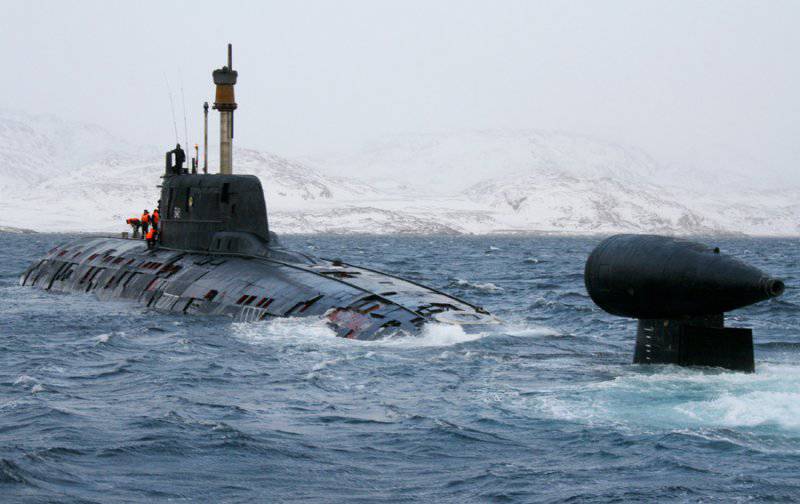
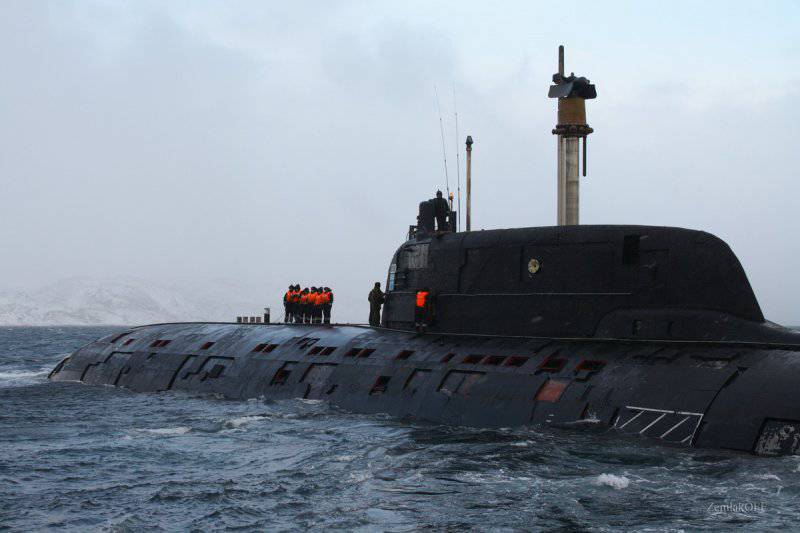
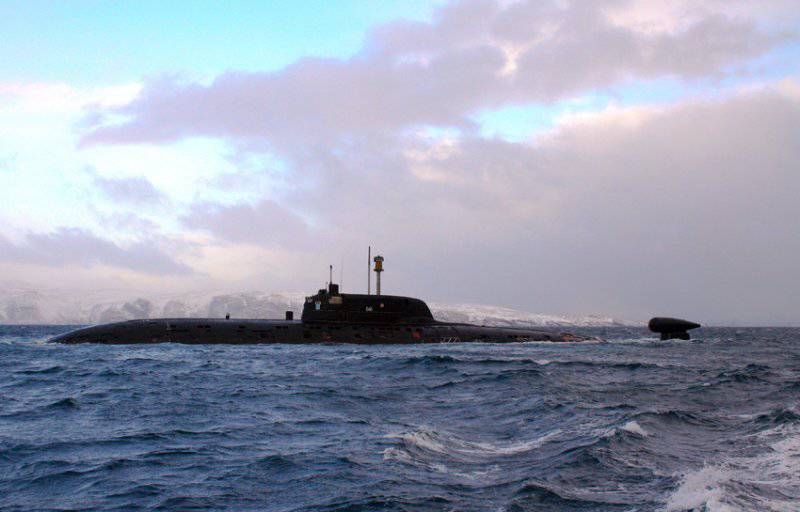
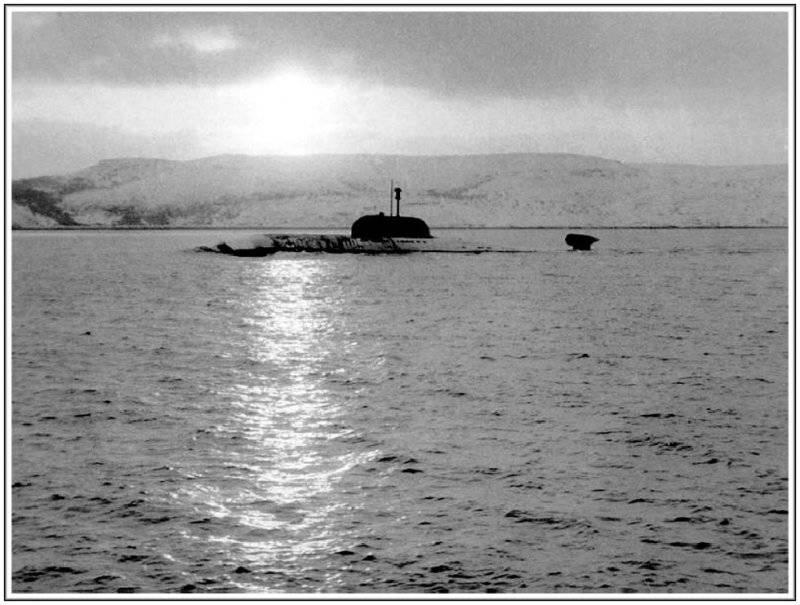
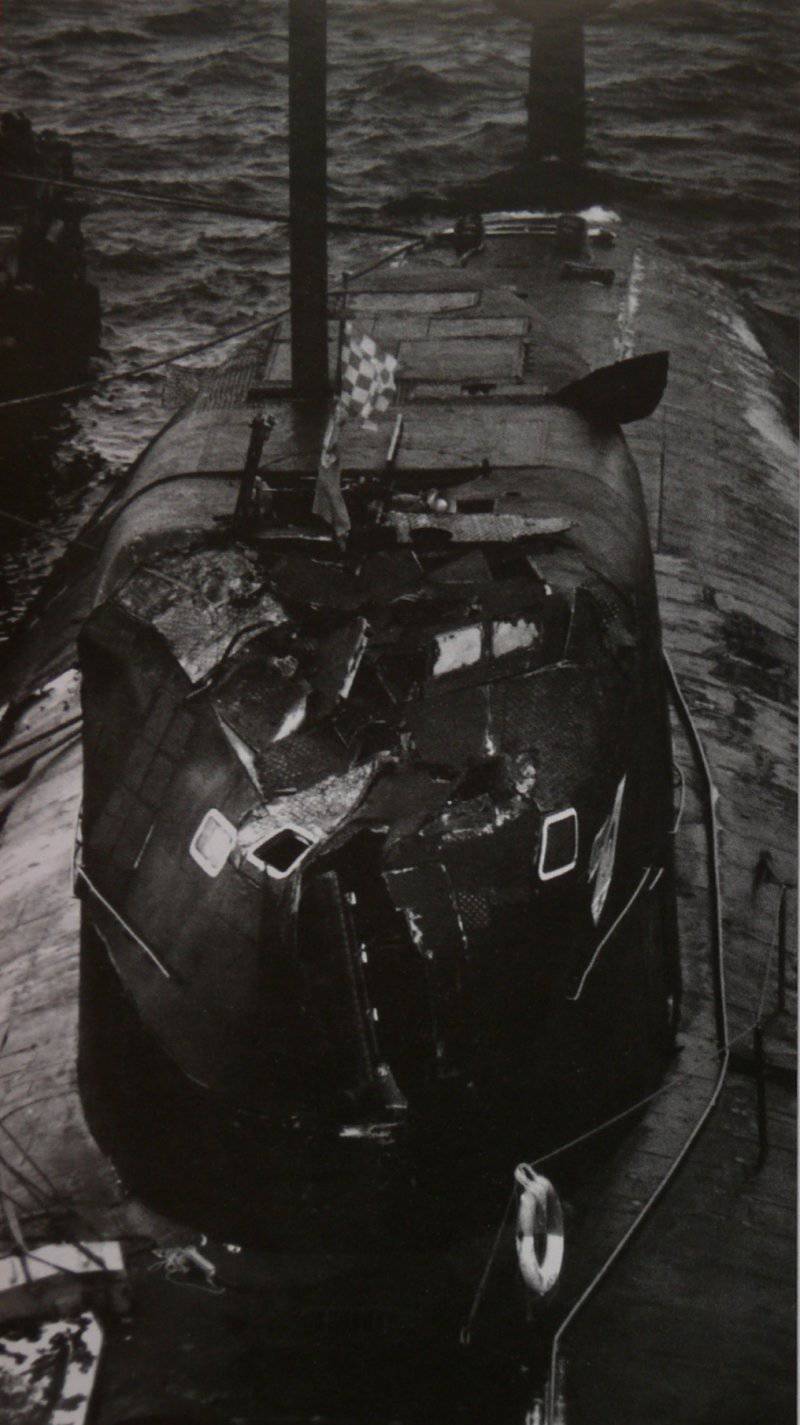
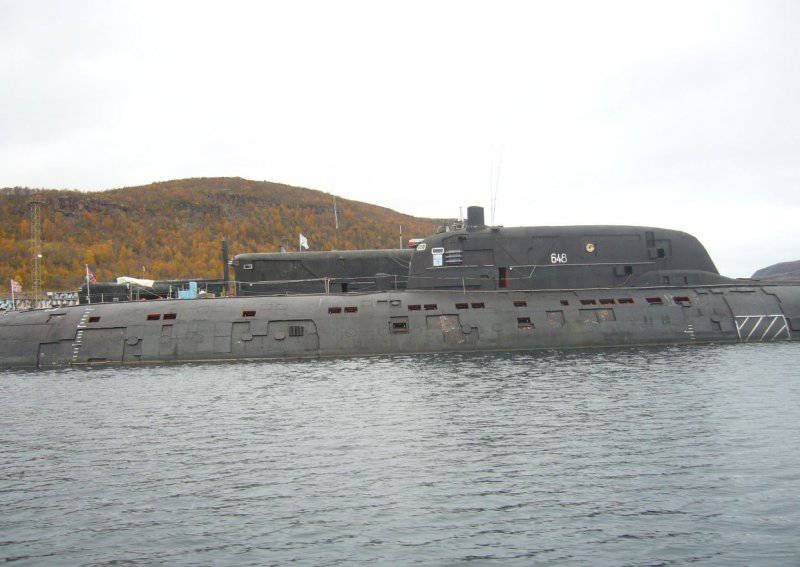
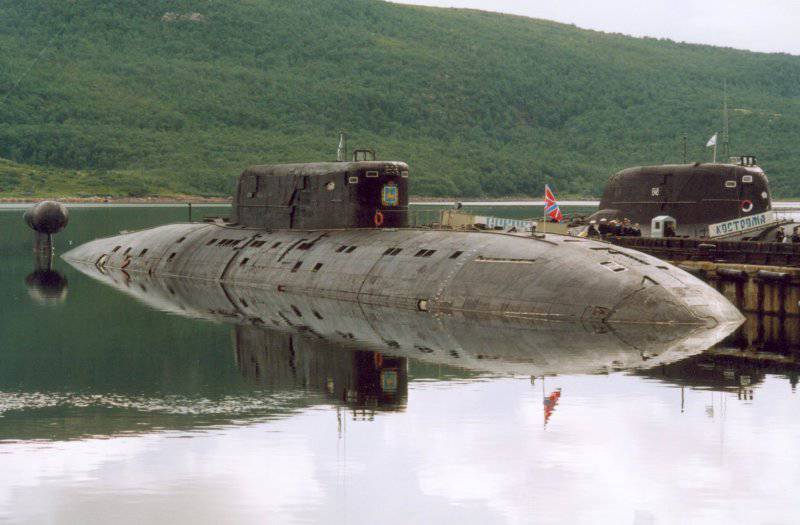
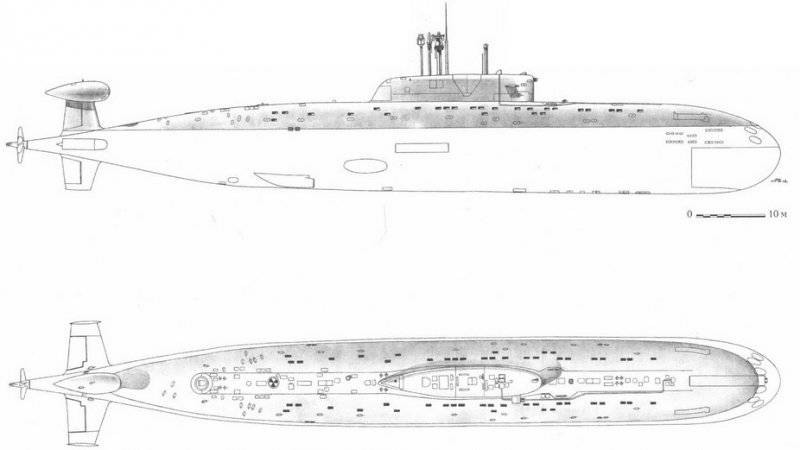
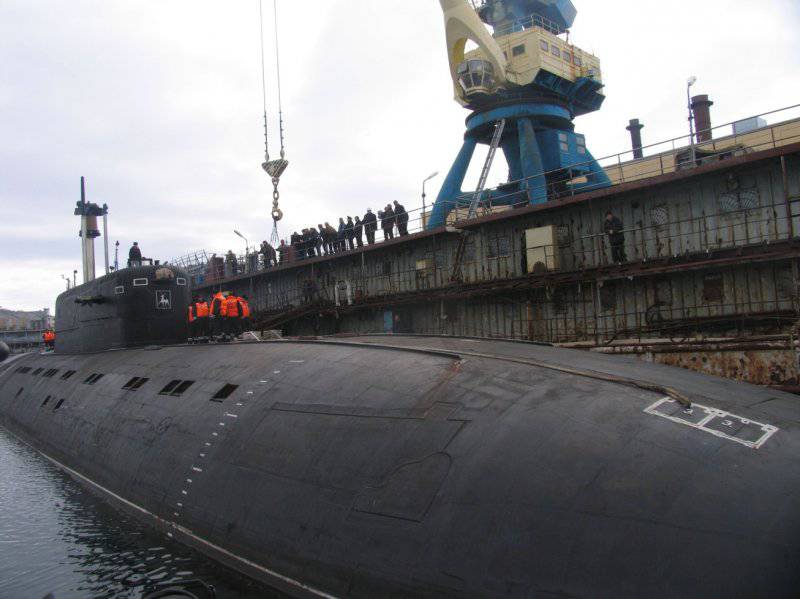
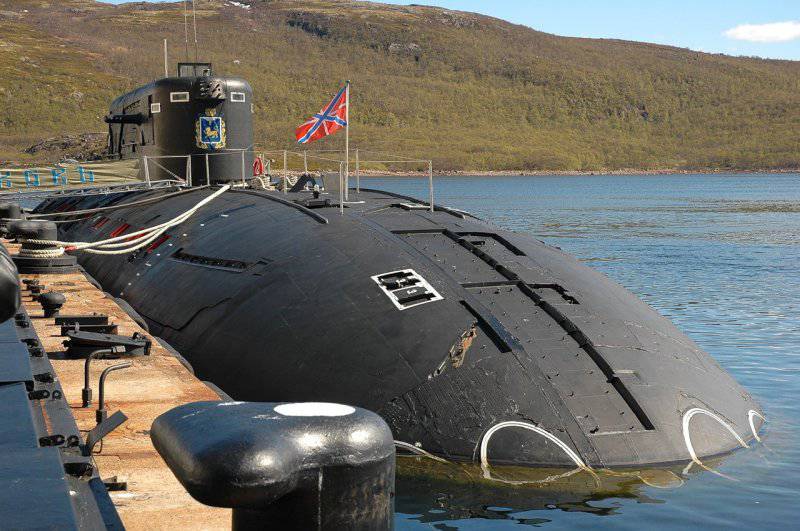
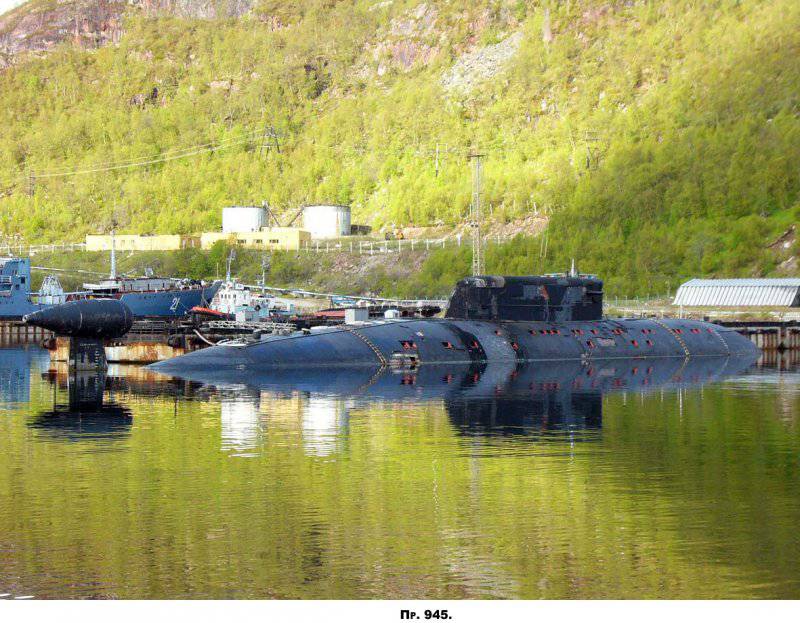
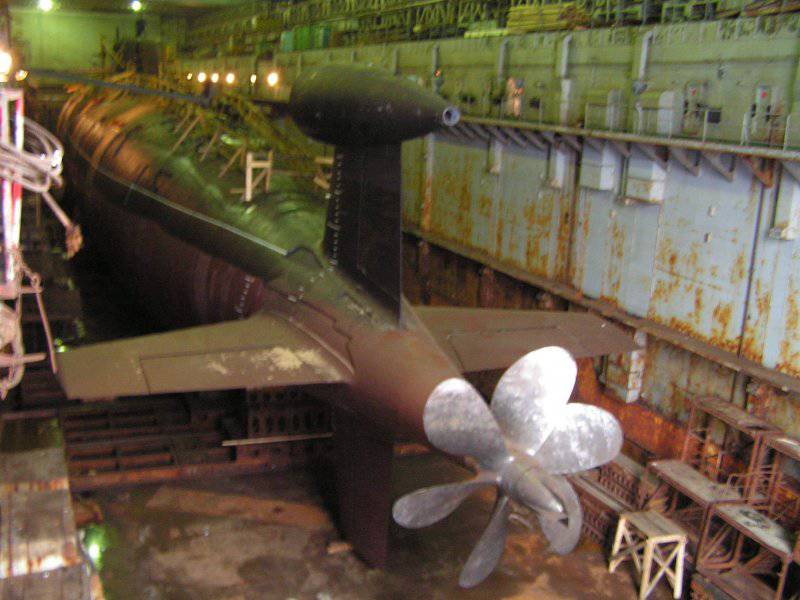
Information